Over the last decade, I’ve helped set and track marketing goals for B2B businesses of all kinds — And I’ve come to think of them more as destinations.
![→ Free Download: Free Marketing Reporting Templates [Access Now]](https://no-cache.hubspot.com/cta/default/53/0d883e85-c2e5-49bb-bef2-bfddb500d84b.png)
They’re points on the map your team wants to reach. And B2B marketing KPIs (key performance indicators)? Well, they’re how you measure how far you’ve gone and just how far you have left.
You can measure trips in miles, hours, or even how many Spotify playlists you’ve gone through. Similarly, there are dozens of KPIs to measure progress toward our marketing goals — but don’t worry; there’s no need to guess and check.
Regardless of industry or audience, there are some KPIs everyone should be tracking, and I’ve compiled them for you here. We’ll define them, why they’re important, and how to track them effectively.
Table of Contents
What are B2B marketing KPIs?
As HubSpot contributor Rebecca Riserbato explains, a key performance indicator (KPI) “measures how your company is performing regarding certain long-term goals or objectives.”
That means B2B marketing KPIs are data points marketers use to monitor and measure the progress of their business-to-business (B2B) marketing initiatives (e.g., website campaigns or email marketing).
It kind of sounds like a metric, doesn’t it? But — plot twist — they’re not the same.
B2B Marketing KPIs vs. B2B Marketing Metrics
Every time I’ve set marketing goals, I’ve needed a refresher on the difference between marketing KPIs and metrics. Many people even use them interchangeably, but this is a little misguided.
KPIs and metrics are similar and work together but have very different responsibilities — like sales and marketing, design and development, or forks and spoons.
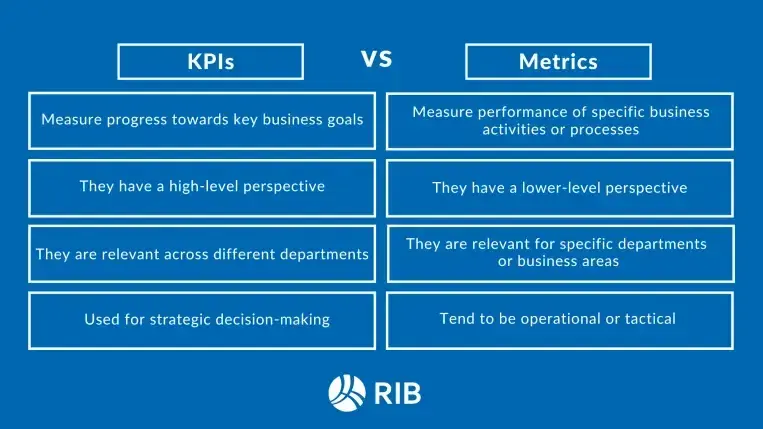
Image Source
KPIs are focused on the big picture. They relate directly to your business’s larger long-term goals and are the same across departments.
Metrics are related to business goals, too, but they zero in on specific tactics and initiatives used to accomplish them and tend to change by department.
To use our travel example again, your KPI could be visiting all of Italy in a month. However, your metrics would be tracking individual cities or regions you need to visit to accomplish that.
Thinking of business: say you want to increase your number of new customers by 25% this year. That’s your KPI.
Your marketing metrics would be the click-through rate of the social media ads you run to try to generate new leads or the open rate of the email campaigns you run.
But why do we even need to track any of these things?
Why track B2B marketing KPIs and metrics?
Simply put, B2B marketing KPIs tell you what your team is working toward and where everything it does needs to lead. They give you direction.
They help guide your strategy by giving you something to point to and ask, “Is this going to help get us to that goal?”
Marketing metrics go even further. These measurements can help you:
- Track progress toward your goals
- Gather customer/audience insights
- Evaluate the effectiveness of your work/creative
- Improve conversion rates
- Plan more effective future campaigns
- Prove return on investment (ROI)
- Incentivize teams
- Make better business decisions
I’ve always liked to say that marketing is a happy marriage of creativity — and science and metrics are the keys to this.
B2B Marketing KPIs and Metrics to Track
Now that you know why tracking B2B marketing KPIs and metrics is important, which ones should you focus on?
Specifics will depend on your organization’s specific campaigns and company goals, but here are 24 of the most important based on some of the most popular marketing initiatives.
Need help tracking your KPIs? HubSpot’s KPI Software can help you build dashboards, create and send automated reports, and track KPIs to measure your teams’ performance and drive improvement over time.
Website Performance KPIs and Metrics
According to our 2024 State of Marketing report, company websites/blogs/SEO have resulted in the biggest ROI for marketers in the past year, which likely comes as no surprise.
For many, your website is the center of all your content marketing and even sales. Website KPIs and metrics help you make sure it’s performing to the level you need it to.
1. Website Traffic: This is the volume of users visiting a website.
Why is it important? Your company website is the hub of many modern businesses. Even if it’s not where people are making actual purchases, it’s where they come to learn more about what you do and often even initiate sales conversations.
Understanding traffic helps you gauge interest and potential for sales activity. In terms of specific metrics, you can track:
- Unique Visits: Total number of unique individuals who click on one or more web pages in a visit.
- Page Views: Total number of web pages viewed, including individually refreshed pages.
- Traffic Source: Where your website visitors come from (i.e., email, social media, search engine)
How to calculate and track it? You can track your website traffic through a number of different tools. In my experience, a combination of HubSpot Analytics and Google Analytics is most effective for businesses using HubSpot tools.
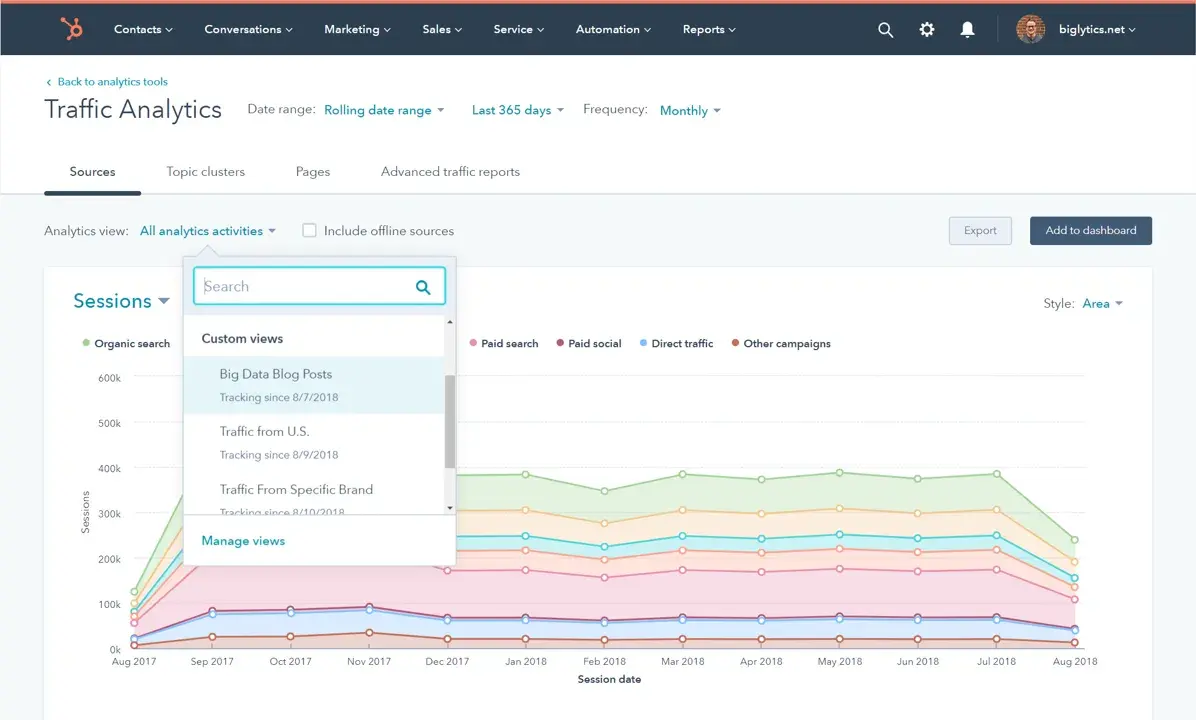
In HubSpot, you can easily view your page views and sessions filtered by time frame or source.
2. Bounce Rate: This is the percentage of website visitors that click on one page and leave.
Why is it important? Bounce rate can help you gauge if your website is delivering what it needs to achieve your goals. If your bounce rate is low, that could mean that people are interested and engaged in your website.
They’re staying and clicking around.
If it’s high, it could mean either your website is not what someone was looking for or didn’t deliver what they wanted, or they immediately found what they needed and could leave.
How to calculate and track it? This is another KPI you can track for specific website pages, landing pages, and blogs in HubSpot. Here’s how it can appear in the analytics of a blog article.
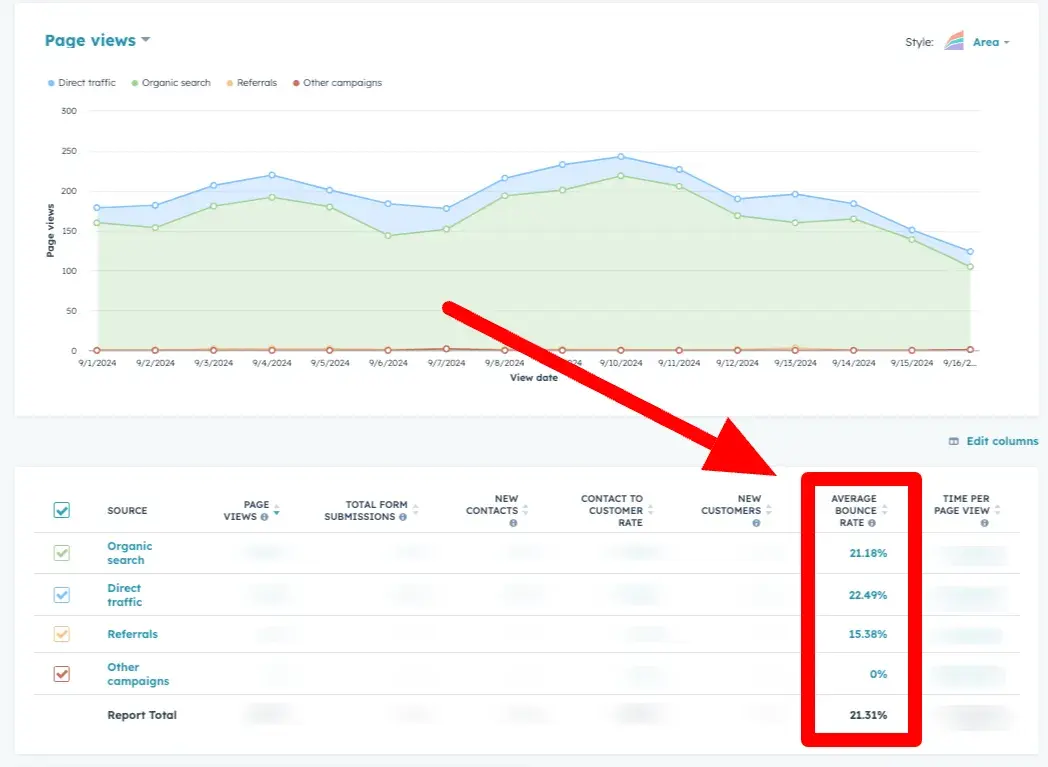
3. Conversions: How many visitors took your desired action on your website, like subscribing to your newsletter or making a purchase.
(It’s also the most important marketing metric if you ask me.)
Why is it important? Leads and new contacts are fuel for your marketing and sales funnel. When someone fills out a form on your website, they’ve shown an active interest in what you offer and want to connect with your business.
It’s a crucial first action to put the rest of your marketing and nurturing activities into motion. People can convert on several different things, so this may mean tracking:
- Form Conversion Rate (or visit to form submission): This is the percentage of website visitors that submit a form. (Formula: Form conversion rate = (total form conversions / total visitors) x 100)
- Number of Form Submissions: This is how many times forms were submitted on your website.
- Number of New Contacts: How many new contacts has your website generated.
- Visit to New Contact: This is what percentage of visits to your website resulted in a new contact.
How to calculate and track it? HubSpot or any tool you use to host your forms or landing pages should provide you with calculated conversion rates automatically, but even if they don’t, you can calculate yours with this formula:
Conversion Rate = Total number of conversions /
Number of visitors (or submissions, clicks, etc.) x 100
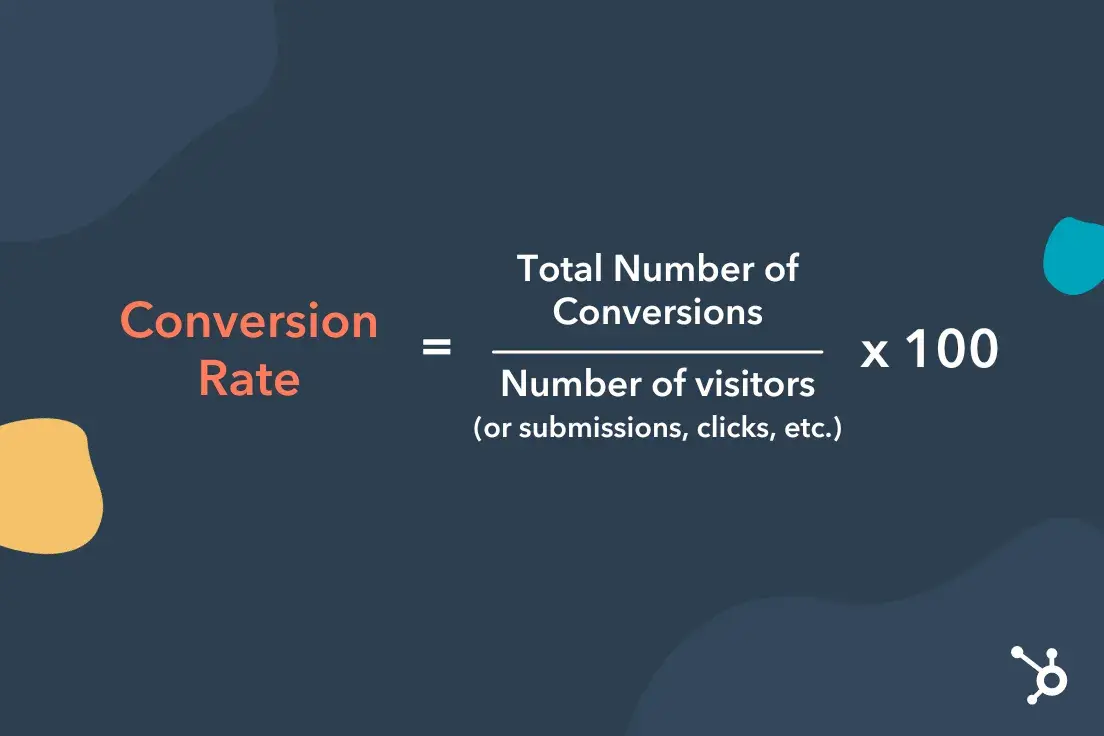
Sales and Marketing Pipeline
Once someone fills out a form on your website, they enter your sales and marketing pipeline to be nurtured toward making a purchase.
63% of B2B marketers report tracking their marketing/sales funnel as KPIs and metrics, and with their direct correlation to revenue, they should be.
4. Number of Leads (or Leads In): This is the total number of contacts generated by your campaigns that could buy from you.
Why is it important? Similar to your number of new contacts, this tells you how many new people you have to nurture towards a purchase. However, they’re different in that these contacts have the qualities that signal it could turn into a customer.
Think of it this way: If you sell enterprise software, a college student could become a contact after downloading a report on your website for a class project, but they can’t buy from you. That said, they are a contact but not a lead.
How to calculate and track it? What criteria actually makes someone qualify as a lead is up to your business, but once you have that set, you can use HubSpot Lead Scoring to identify these contacts.
From there, you can create an active list in HubSpot to automatically segment these leads and keep an eye on the size of that list.
5. Cost Per Lead (CPL): This is the total number of dollars it takes to acquire a potential customer.
Why is it important? HubSpot’s Jay Fuchs explains, “Generally speaking, [CPL] is used to gauge the efficacy of individual campaigns — via channels like Google ads, email marketing, or social media — but it can also help you understand whether you’re getting the most out of your marketing spend as a whole.”
In other words, this can help you determine if your marketing campaign is cost-effective. If it costs more to bring in a lead than you’ll make off it, that campaign was not worth your time.
How to calculate and track it? You’ll need to calculate this on your own or through a spreadsheet. Use this formula:
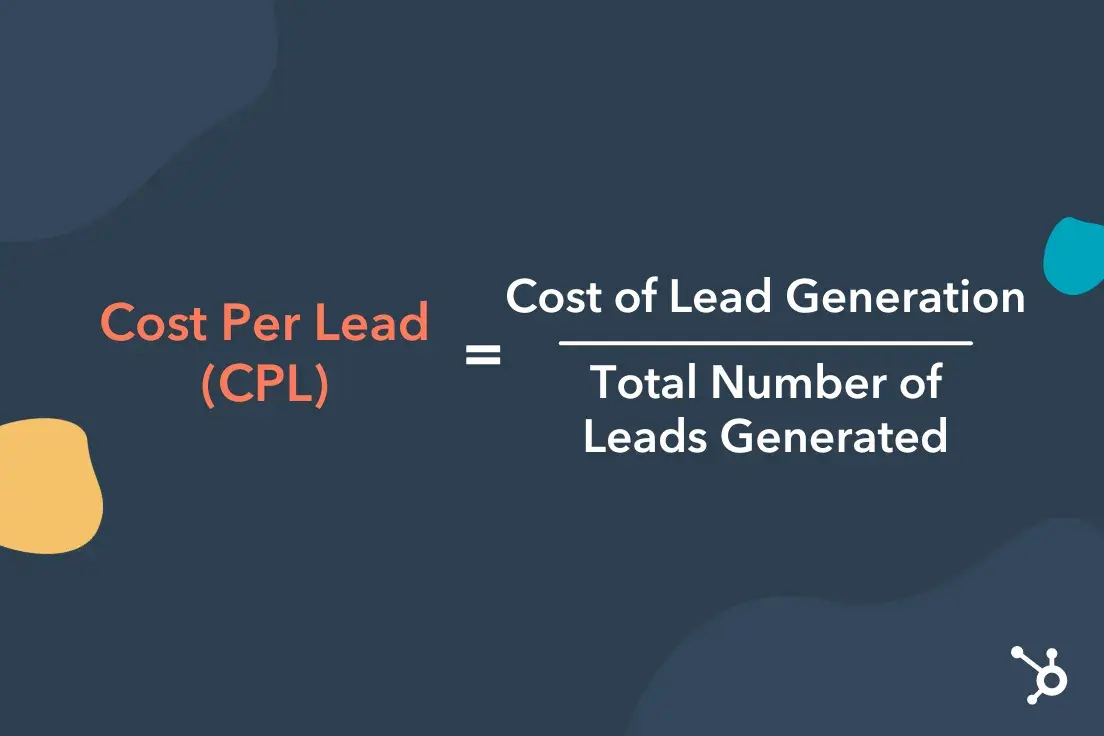
Cost of Lead Generation/Total Number of Leads = Cost per Lead
Fuchs explains this formula in detail in “How to Calculate & Apply Cost per Lead (CPL).”
6. Close Rate (or Lead to Closing Rate): This is the percentage of leads that eventually become customers.
Why is it important? Your close rate can help gauge the quality of the leads you’re bringing in as well as your sales process.
If your close rate is high, things are going well. If not, you may need to re-evaluate your lead criteria or sales behavior.
How to calculate and track it? This is another KPI you’ll need to calculate on your own or through a spreadsheet. Use this formula:
Close Rate =
(number of leads that closed as sales / total number of leads) x 100
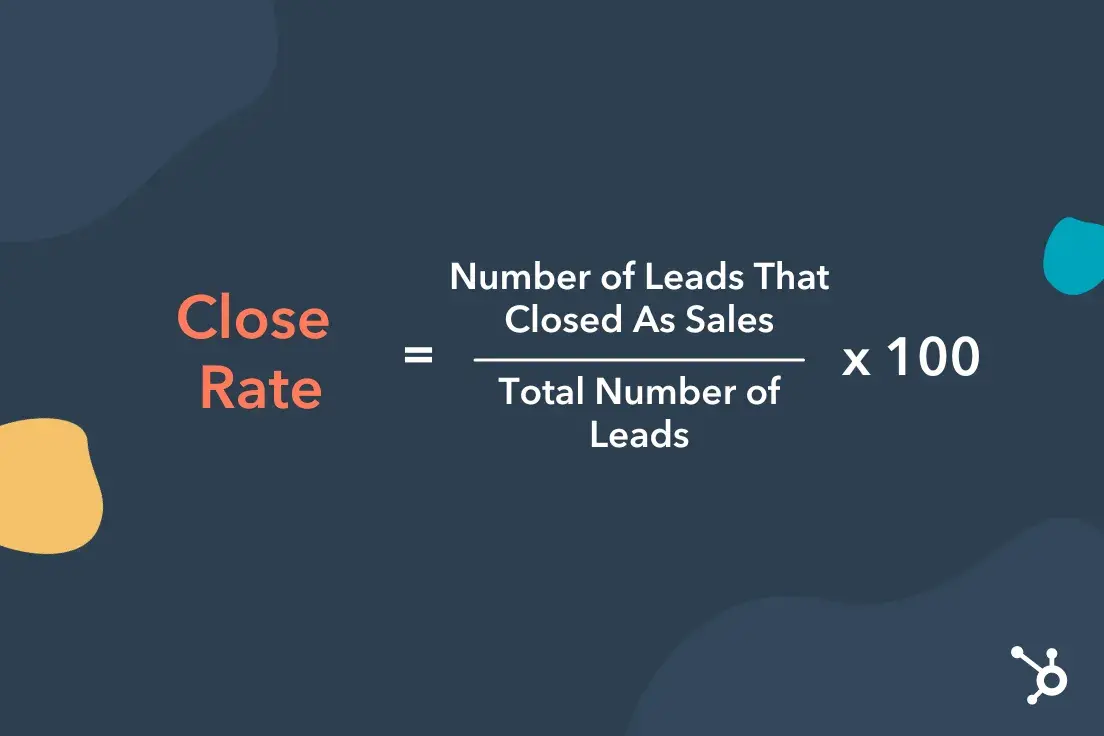
7. Number of MQLs (Marketing Qualified Leads): The number of leads engaged with your company’s marketing and have the potential to become a more serious prospect.
Why is it important? MQLs help your marketing team understand how many leads they’re bringing in and if they’re quality leads.
How to calculate and track it? Like number of leads, you can use a combination of HubSpot Lead Scoring, an active list in HubSpot, and workflows to automatically segment these leads and keep an eye on the size of that list. Learn more about MQLs.
8. Number of SQLs (Sales Qualified Leads): Number of prospective customers ready to talk to someone on your sales team.
Why is it important? SQLs have usually expressed enough interest in your product or service to be ready to move into your sales process. Tracking this number lets you know how many people your sales team is currently working with.
It also provides valuable insight into which marketing efforts generate the most sales activity.
How to calculate and track it? Once again, you can use a combination of HubSpot Lead Scoring, an active list in HubSpot, and workflows to automatically segment these SQLs and keep an eye on the size of that list. Learn more about SQLs.
Pro Tip: If your marketing and website are hosted on HubSpot, our Dashboard & Reporting software is a user-friendly, single source of truth for all this data.
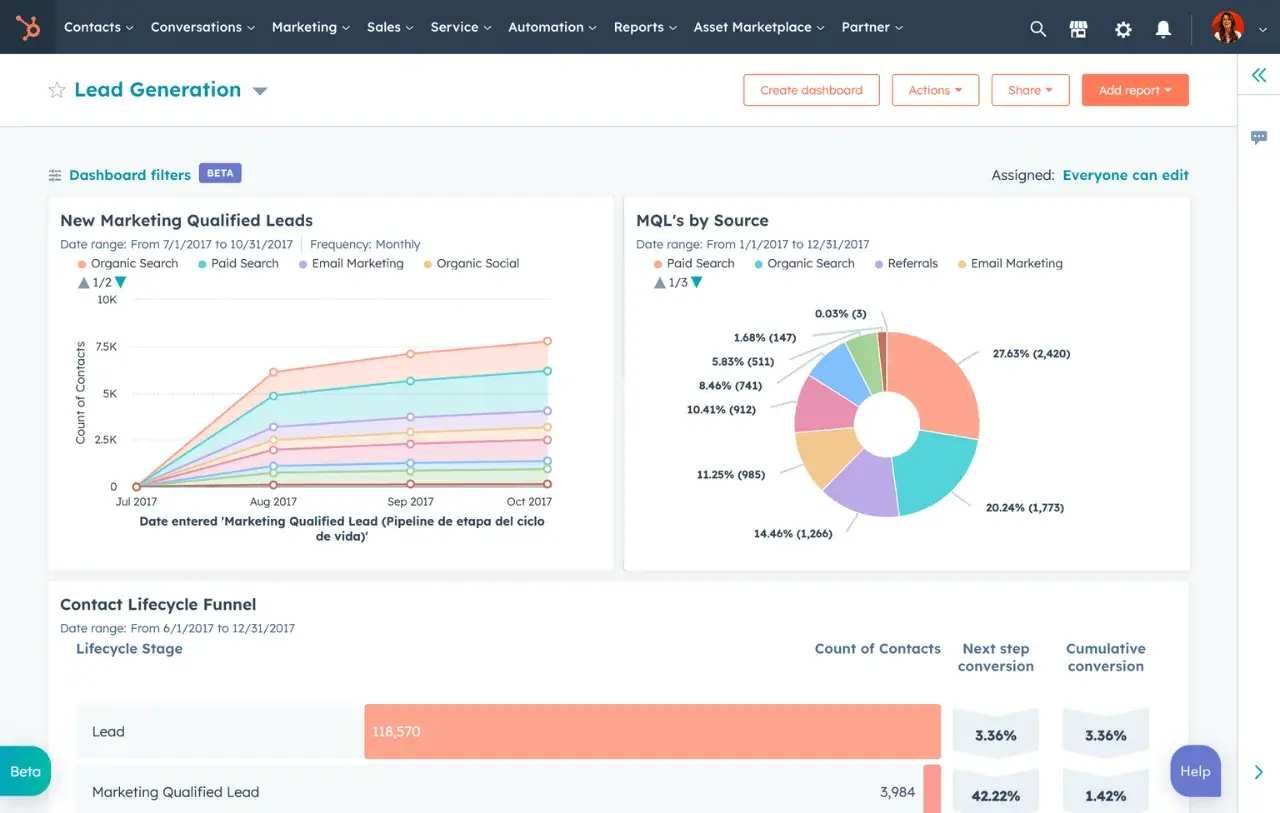
9. Customer Acquisition Cost (CAC): The amount of money it takes to convert a potential lead into a customer.
Why is it important? Like CPL, CAC tells you how cost-efficient your marketing and sales processes are. You don’t want to be spending more on getting customers than you are making from them.
How to calculate and track it? Information from HubSpot can help guide this calculation, but ultimately, this is another you’ll need to calculate it on your own or through a spreadsheet. Use this formula:
CAC = marketing spend/number of new customers resulting from campaign
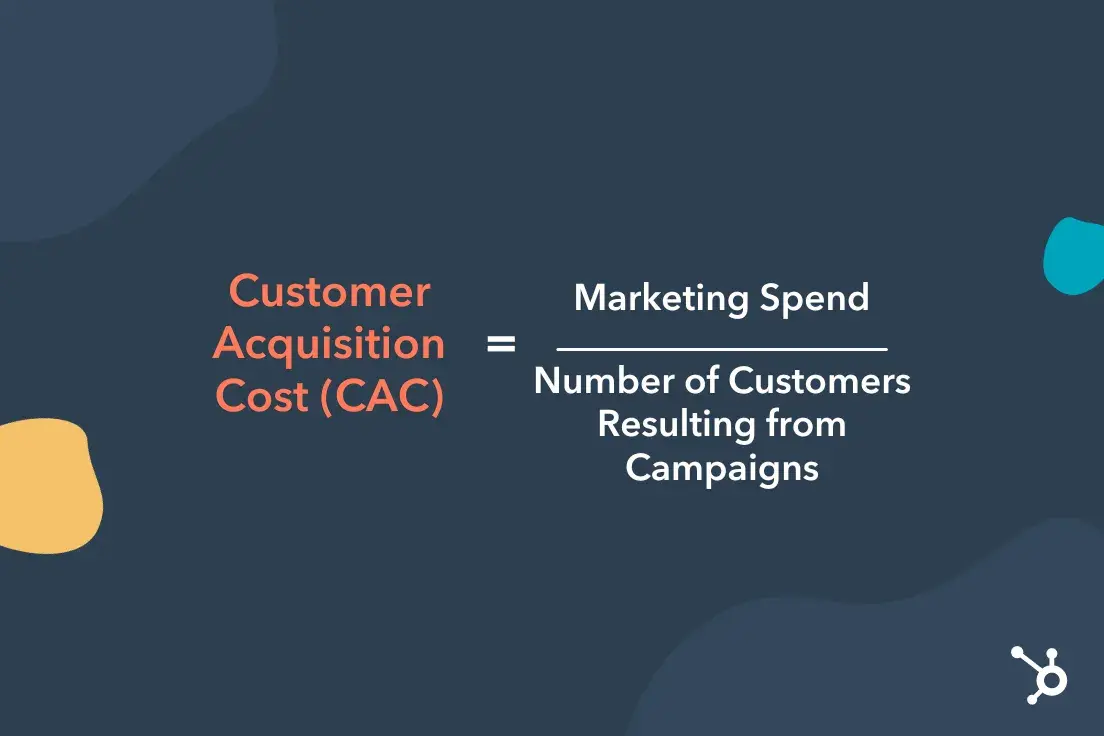
10. Customer lifetime value (CLV): The total amount of revenue a business can expect to make from a single customer.
Why is it important? Knowing how much you’ll make from a customer is helpful when determining how much you can spend trying to close them. In other words, this is a useful metric to compare to CAC. If your CAC is higher than your LTV, you’re likely spending too much money acquiring customers and need to revisit your strategy.
The higher the CLV, the more valuable the customer from a financial standpoint.
How to calculate and track it? Calculate this KPI on your own or through a spreadsheet using the formula:
Customer lifetime value =
average transaction size x number of transactions x retention period
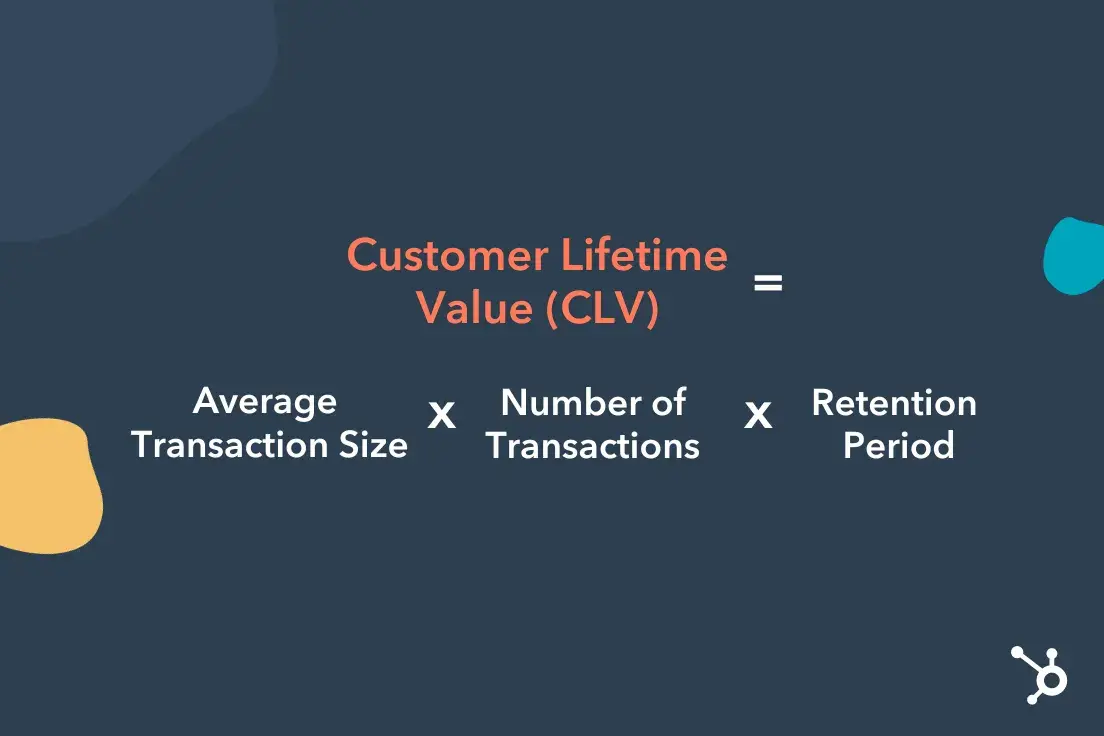
11. Monthly recurring revenue (MRR): This is the amount of revenue a business receives from a customer each month, such as for a subscription-based service or consulting retainer.
Why is it important? This is how much money you are “guaranteed” to have each month from your customers. It allows you to plan budgets and make other financial predictions.
How to calculate and track it? Information from HubSpot can help guide this calculation, but ultimately, this is another you’ll need to calculate it on your own or through a spreadsheet. Use this formula:
Monthly recurring revenue =
average revenue per customer x total number of customers
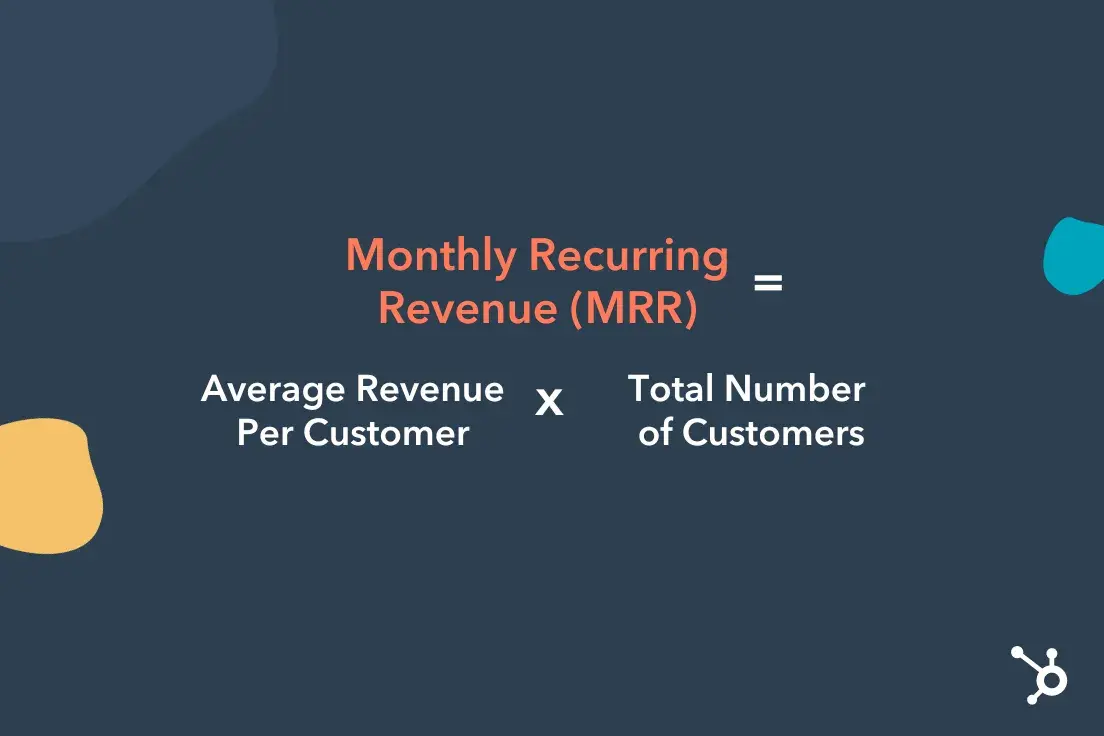
12. Net Promoter Score (NPS): This is a measurement of customer satisfaction using a scale of 1-10 to gauge how likely a customer would recommend your business to a friend. (10 being extremely likely, 1 being unlikely)
Why is it important? NPS gives you a good idea of how happy customers are with their purchase and how likely they are to buy again or stick around. Plus, referrals, recommendations, and other forms of word-of-mouth can lead to quick closes, so you want to make sure your customers want to give them.
How to calculate and track it? Owl Lab’s Sophia Bernazzani Barron recommends calculating NPS using these three steps:
1. Survey your customers and ask them, “On a scale of 0 to 10, how likely are you to recommend us to a friend?”
2. Categorize respondents according to their score: Scores 0-6 are Detractors, 7-8 are Passives, and 9-10 are Promoters.
3. Disregarding the Passives, subtract the percentage of Detractor responses from the percentage of Promoter responses to determine your Net Promoter Score. This score can range from -100 to 100.
13. Return on Investment (ROI): the amount of money you gain from your marketing efforts compared to their cost.
Why is it important? You never want to spend more than you make. Like CPL and CAC, calculating and tracking your marketing ROI can help you determine how you are performing in that regard.
How to calculate and track it? You can calculate your ROI using this formula:
ROI =
(Total Revenue – Total Investment) / Total Investment
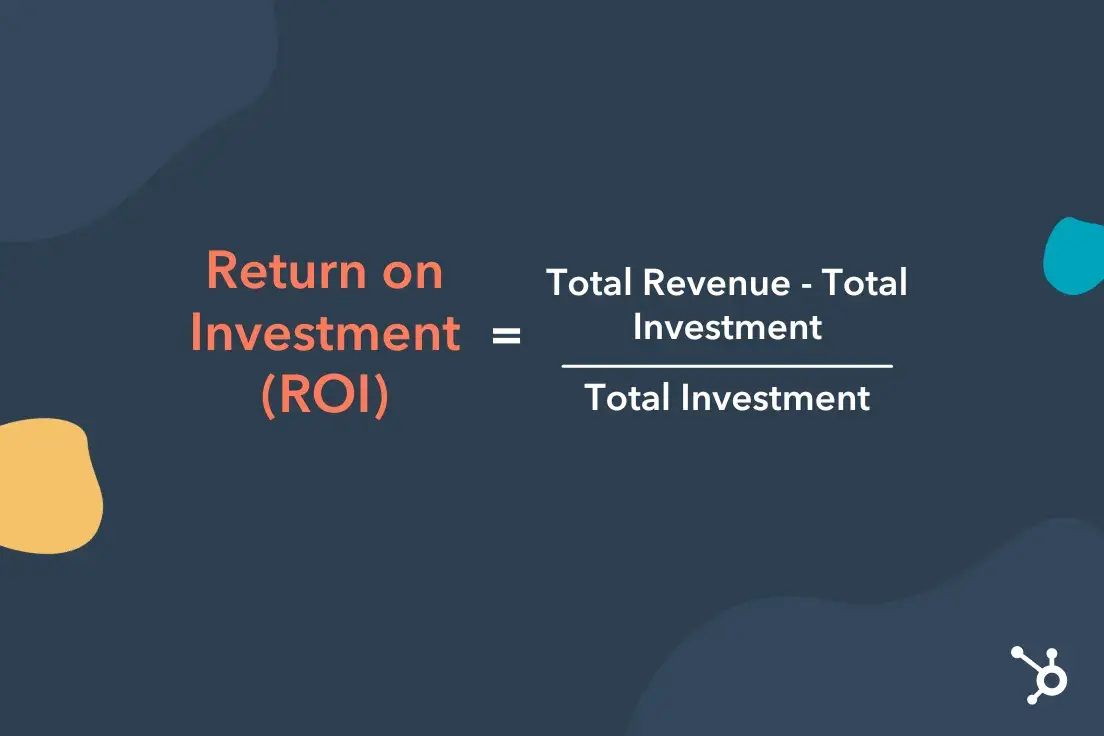
Learn more about calculating marketing ROI.
Email Marketing KPIs and Metrics
14. Number of Email Contacts (or Email List Size): This is how many people in your database have opted into email marketing and communication from you.
Why is it important? Email marketing is not dead. In fact, 77% of marketers have seen an increase in email engagement over the last 12 months, so your email list size does matter. The more email contacts you have, the more people you can reach with targeted campaigns.
Read: Email Marketing: The Ultimate Guide (Expert Tips + Data to Know)
How to calculate and track it? You should be able to see the total number of contacts in your database using any of your email marketing tools, including HubSpot. In HubSpot, navigate to CRM > Contacts and see the total number of records below the header.
But this number may not always be accurate. It also includes contacts whose email addresses you have but perhaps have unsubscribed.
Knowing this, I recommend having an active list in HubSpot, pulling all of the CRM’s subscribed and engaged contacts.
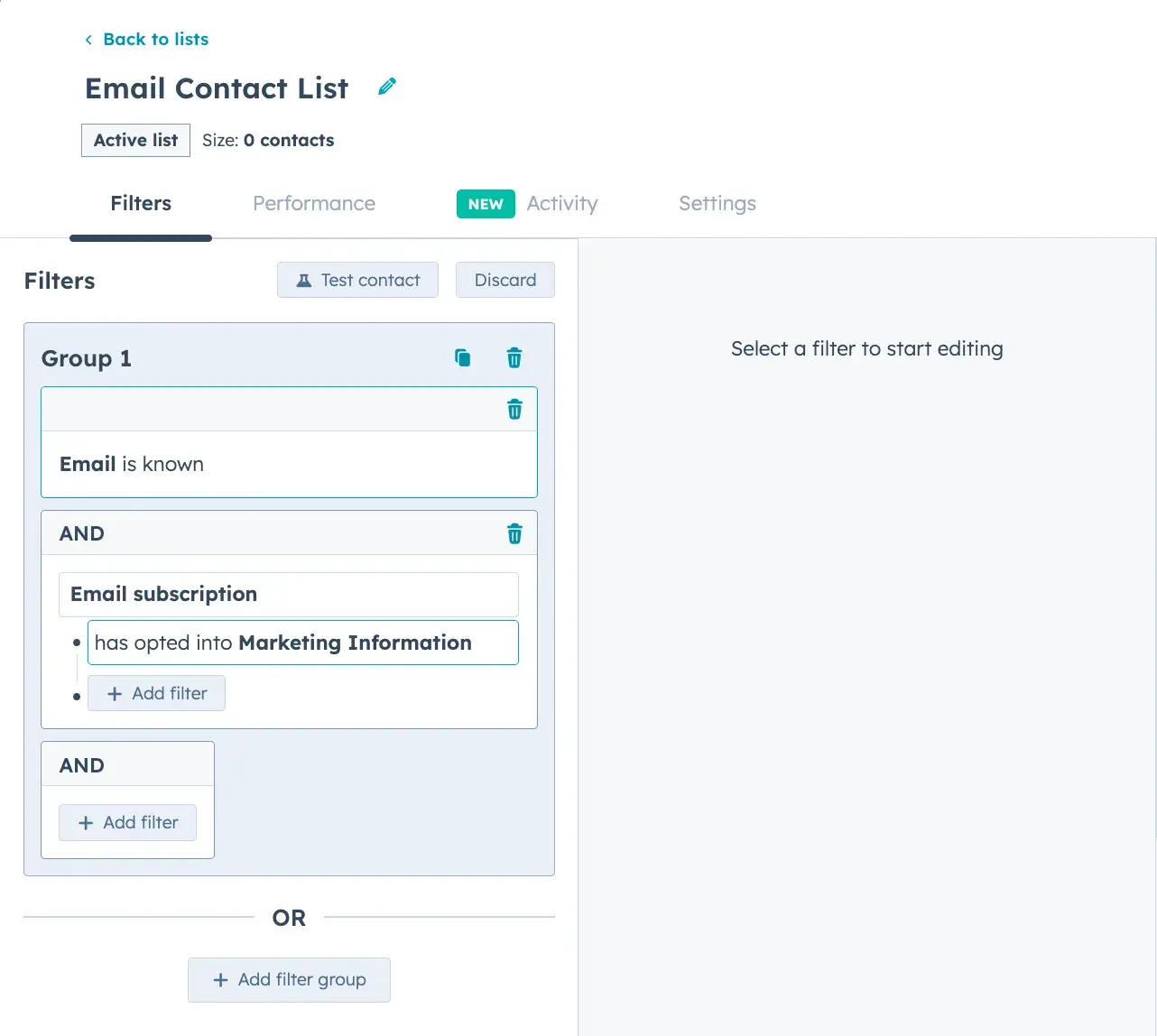
15. Email Open Rate: The percentage of people opening your marketing emails.
Why is it important? There’s no point in sending an email if people aren’t opening and reading it. This metric lets you know how successful you are at this or if you need to adjust your subject line, send time, or sender, among other things.
How to calculate and track it? This is another metric that should be easily found in any mainstream email marketing tool.
In HubSpot, you just need to navigate to the email in question, click “actions,” then “view performance,” and you’ll find the open rate called out right below the header.
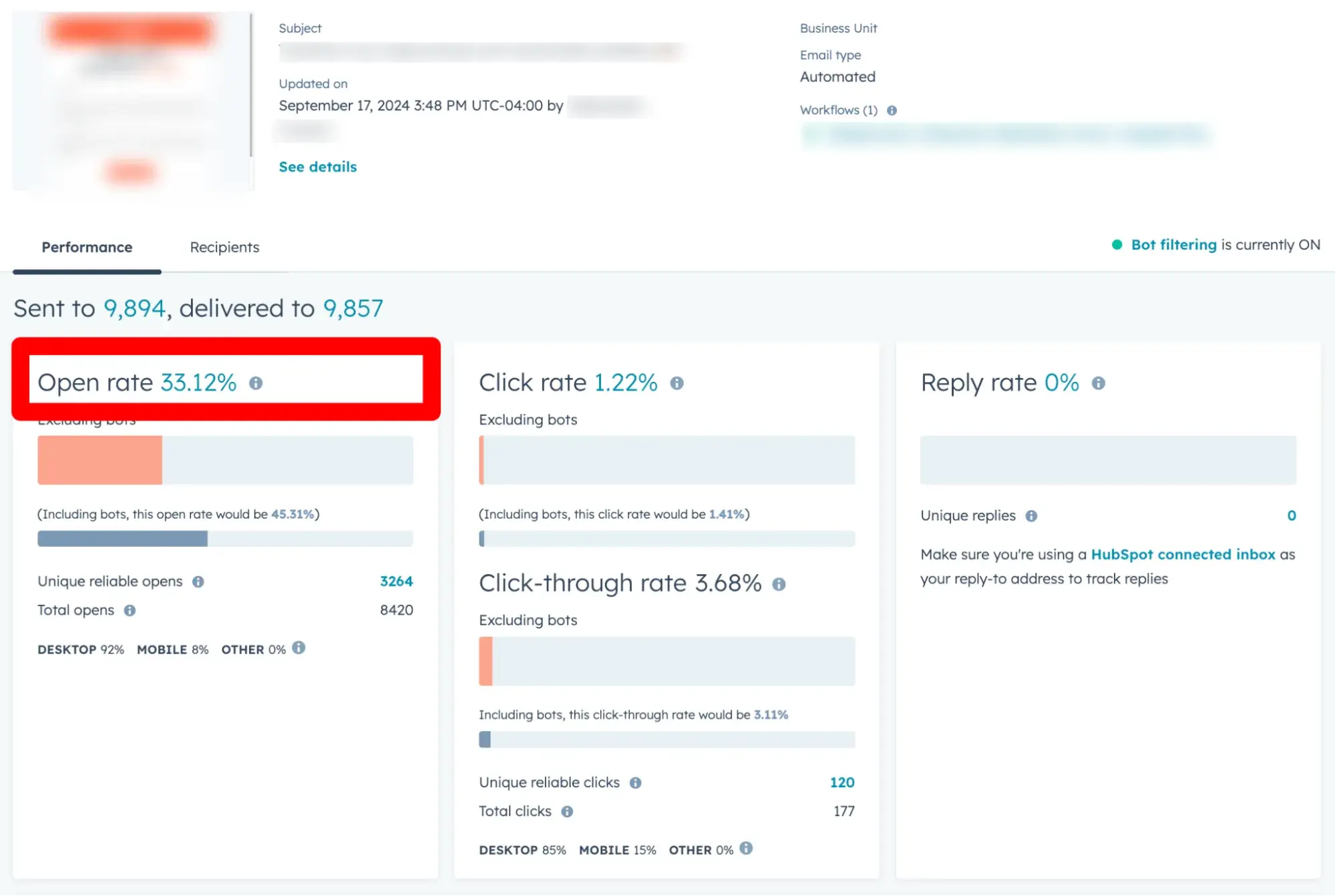
If your tool doesn’t provide this metric or you use a personal email client, you can calculate your open rate using this formula:
Email open rate =
(number of emails opened / total number of emails delivered) x 100
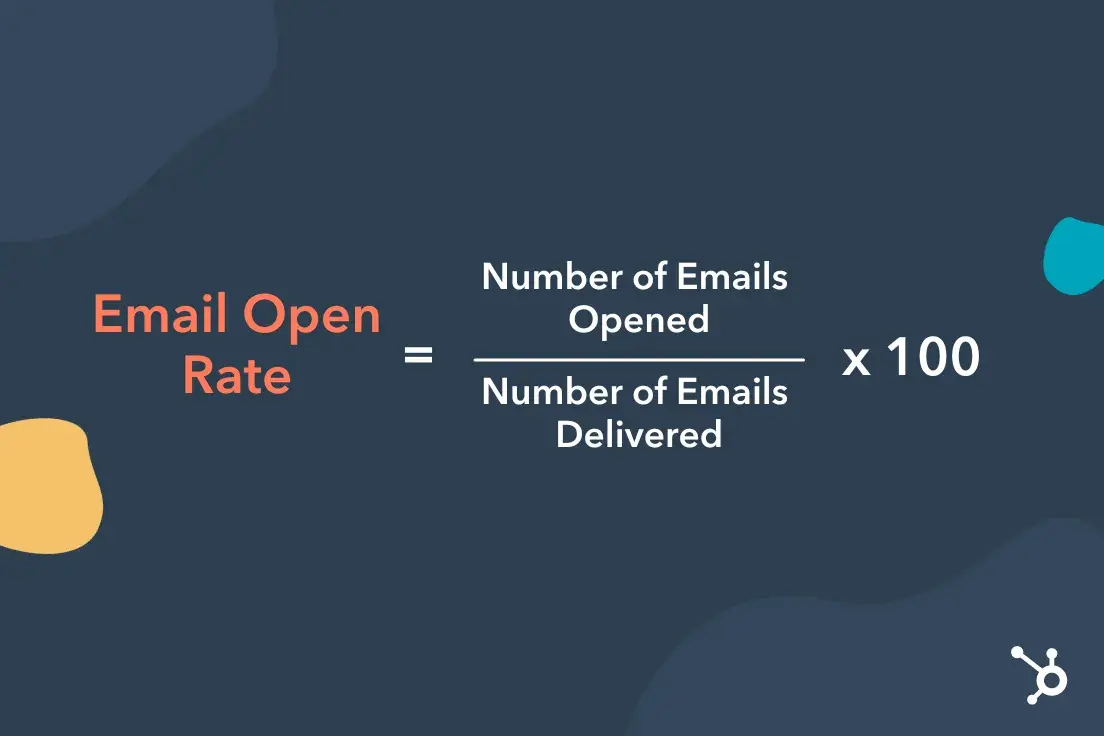
Note: While you can certainly calculate email metrics on your own, it’s next to impossible to know exactly how many people opened your email without a third-party tool.
So, even if you don’t have the budget, I recommend investing in a free email marketing tool to track your metrics more easily.
16. Email click-through rate (CTR): This is how many people click a link in the email you sent out of those who opened it.
Why is it important? An open is one thing, but the click is what you’re really after with email marketing. CTR tells you just how effectively your email copy convinced someone to take action.
How to calculate and track it? Like open rate, CTR can be found prominently in your email performance page or dashboard like here in HubSpot:

You can also calculate your CTR using this formula:
Email clickthrough rate =
(number of email clicks / total number of emails delivered) x 100
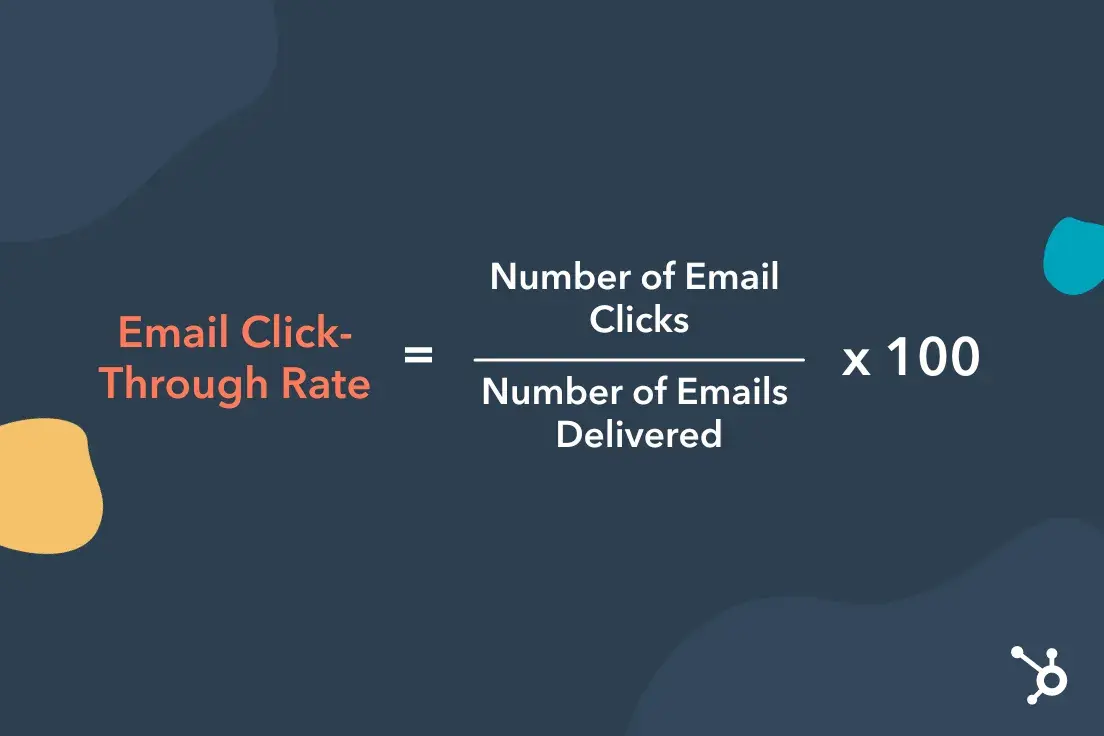
Like opens, this can be difficult to measure without a formal email marketing tool. If you opt not to use an email marketing tool like HubSpot or MailChimp, use bit.ly or other UTM tracking tools to create trackable URLs.
Social Media KPIs and Metrics
According to our research, social media ties with a company’s website or blog as the top ROI-driving channel for marketers in the past 12 months. So, it’s important to know how you’re performing there.
Organic social media is usually best suited to boosting brand awareness and engaging your audience, while paid social media can generate big results in sales and more.
The KPIs I recommend for both reflect that, but you can dig deeper into social media analytics in our ultimate guide.
17. Social media reach (following): Total number of followers across social media or per platform.
Why is it important? Like an email subscriber, a social media follower “opts in ” to stay in contact with your business and hear more about what your brand has to offer.
This number gives you a good estimate of your initial reach on social media before things like engagement and hashtags.
How to calculate and track it? Most social media tools like Buffer, Hootsuite, and SproutSocial have tools to monitor your followings on multiple platforms. HubSpot will track this for Facebook, Instagram, X, and your LinkedIn Company page if connected.
To view yours, navigate to “Marketing,” “Social,” then “Analyze.”
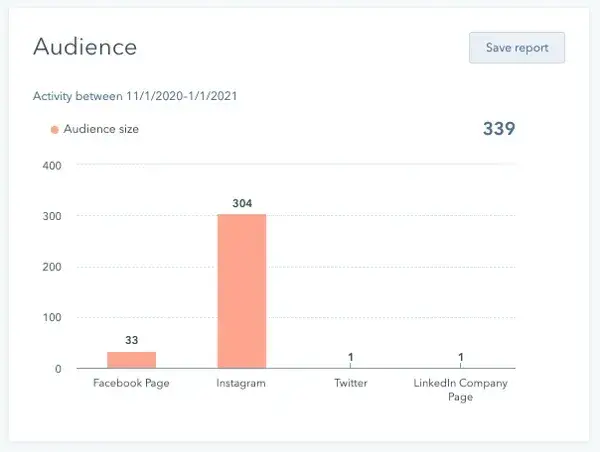
18. Social media engagement: This measures how many interactions your posts on social media are getting.
Why is it important? Social media is all about connecting and one of the biggest indicators that your content is successfully connecting with your audience is engagement. Engagement is also often a big factor in social media algorithms.
The more engagement a post gets, the more likely it is to get shared to explore and discovery feeds.
Some common social media engagement metrics include:
- Likes
- Comments
- Shares or Retweets
- Messages
- Tags or Mentions
- Replies
- Impressions or views
- Plays
How to calculate and track it? Again, most social media management tools can monitor your followings on multiple platforms, as does HubSpot.
HubSpot shows you clicks, shares, impressions, and interactions (likes, reactions, and comments) of both posts published via its tools and directly on Facebook, Instagram, X, or a LinkedIn Company page.
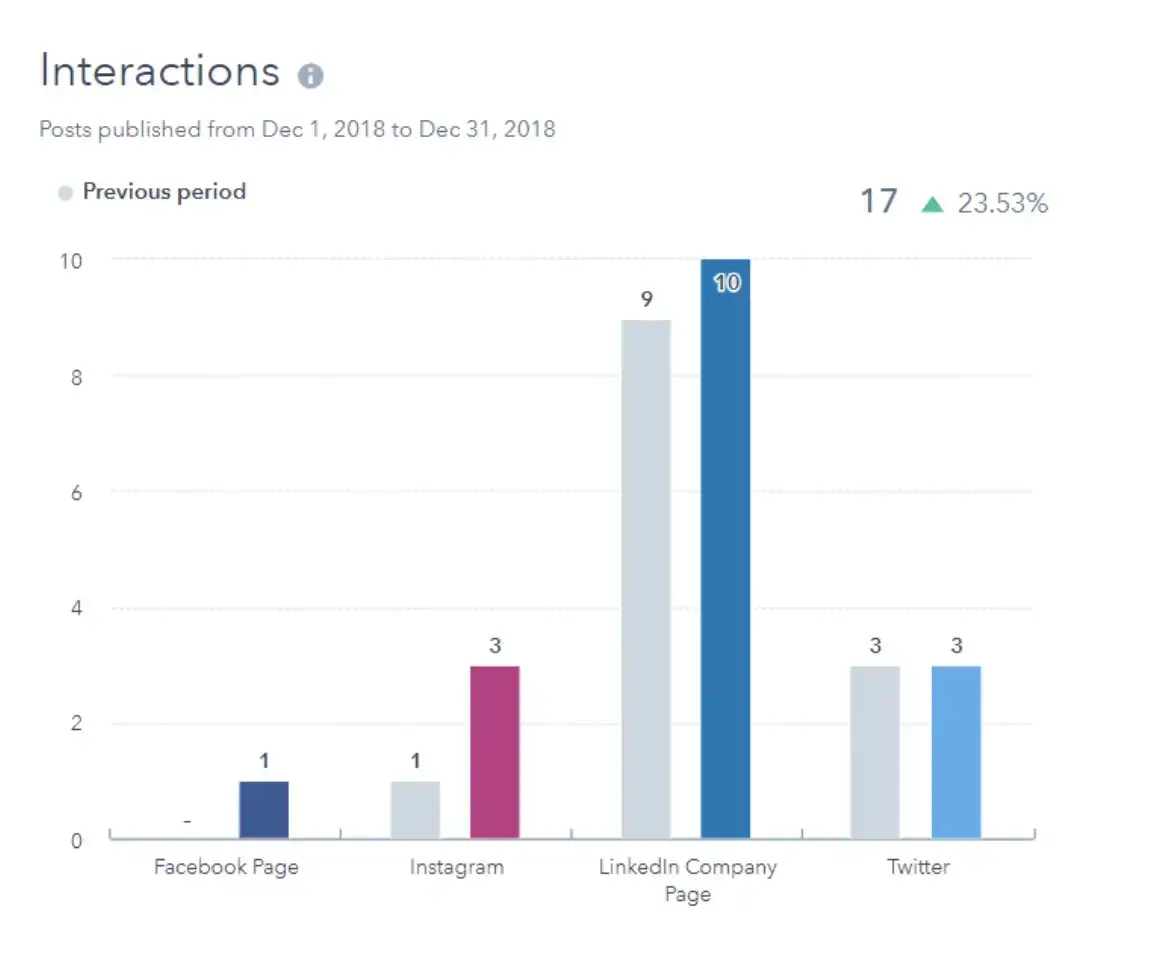
Paid Ads Performance
If you’re looking for more bottom-of-the-funnel impact from your social media, paid advertising is likely in your strategy. All major platforms including Facebook, Instagram, LinkedIn, TikTok, and YouTube offer advertising options.
Here are some of the metrics you should be tracking to get the highest social media advertising ROI.
19. Impressions: This is how many times your ad gets seen.
Why is it important? Reach is a huge metric when it comes to any type of advertising and impressions is a reflection of that.
If you’re investing with the goal of increasing brand awareness, you’ll especially want to make sure you’re getting a healthy amount of impressions.
How to calculate and track it? This is something your advertising platform will share with you. However, if you use HubSpot to manage your Facebook, LinkedIn, or Google ads, you can see them there as well.

20. Click rate: The percentage of clicks your ad gets compared to how many times it is seen.
Why is it important? Getting noticed is good, but eliciting action is even better. Your click rate helps identify just how successful you are at that.
Plus, if the goal of your ad is to generate traffic or leads, you need to make sure this number is healthy to make sure you’re getting your money’s worth.
How to calculate and track it? Like impressions, this is something your advertising platform will share with you, but you can also calculate it using this formula:
Click Rate = number of clicks / number of impressions x 100
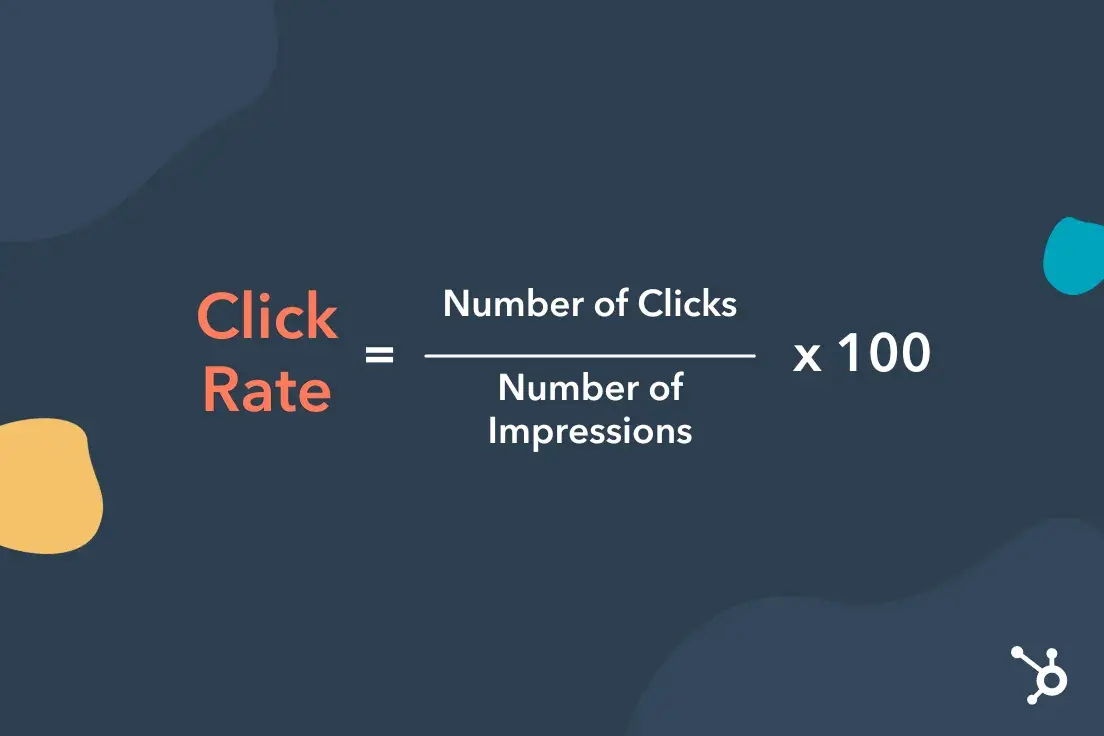
21. Lead rate (or lead conversion rate): The percentage of impressions that turned into leads from your ad.
Why is it important? If the goal of your social media advertising is to generate leads, this should be your number one metric. However, even if it’s not, this can tell you a great deal about how compelling your ad copy or creative is.
If your lead rate is high and that wasn’t your goal, there’s something working well with the ad that you should take note of.
How to calculate and track it? Again, this is something your advertising platform will share with you, but you can also calculate it using this formula:
Lead Conversion Rate = (Number of Leads Generated / Total Number of Impressions or Visitors) x 100
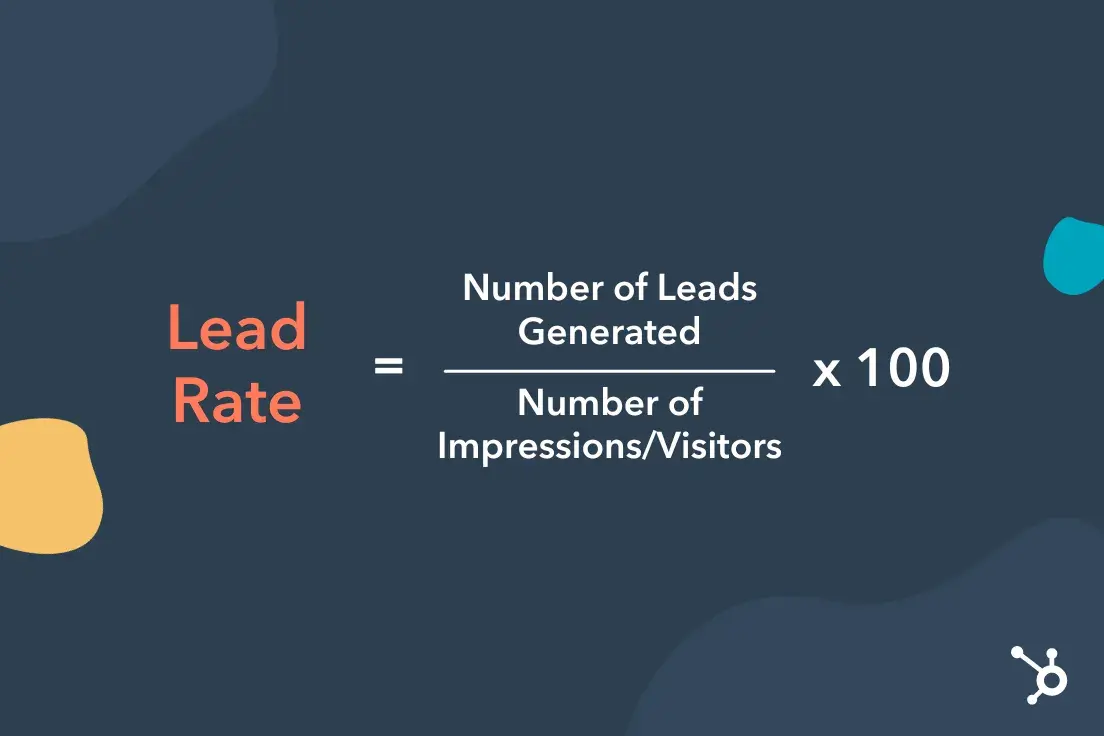
Note: If your goal is leads, you’ll also want to track the number of leads generated from your ads.
22. Cost per impression (CPM): How much you’re spending to generate an impression from your advertising. Impressions are typically billed by the thousand.
Why is it important? This metric tells you how cost-effective your advertising spend is. You should not be spending more on generating impressions than you are making from them.
How to calculate and track it? Again, this is something your advertising platform will share with you, but you can also calculate it using this formula:
CPM = Total cost of campaign / number of impressions x 1000
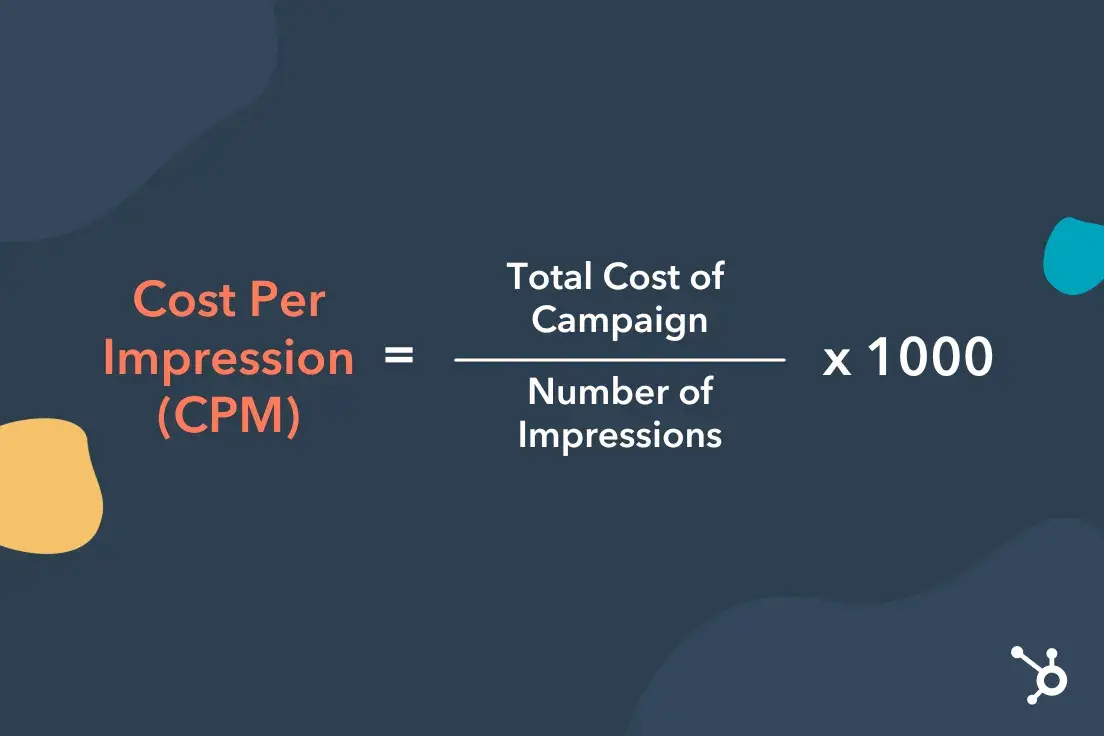
23. Cost per lead: How much you’re spending to generate a lead from advertising.
Why is it important? This metric tells you how cost-effective your advertising spend is if you’re focused on generating leads.
How to calculate and track it? Again, this is something your specific advertising platform will share with you, but you can also calculate it using this formula:
Cost Per Lead = Total cost of campaign / number of leads
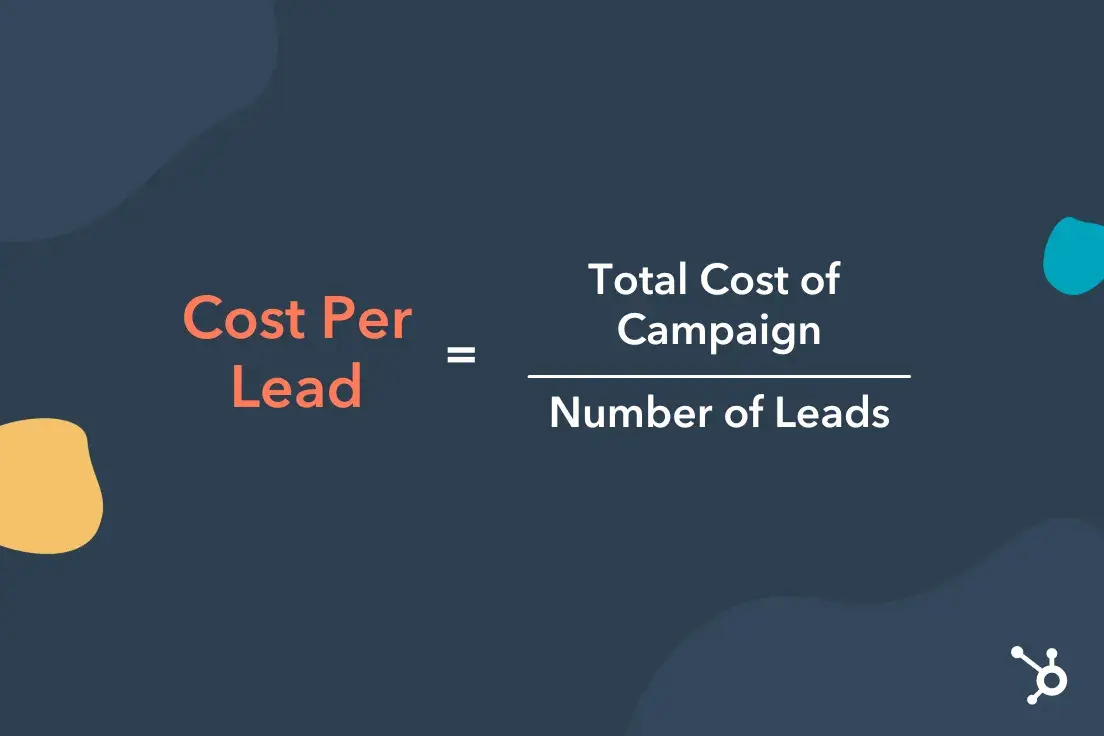
24. Return On Ad Spend (ROAS): The revenue generated from a social media advertising campaign compared to every dollar you spend. It’s usually a ratio.
Why is it important? No big revelation here: You want to make sure you’re making more money from your advertising than you are spending.
How to calculate and track it? You can calculate your ROAS using this formula:
ROAS=
Revenue generated from ads / cost of ads (ad spend)
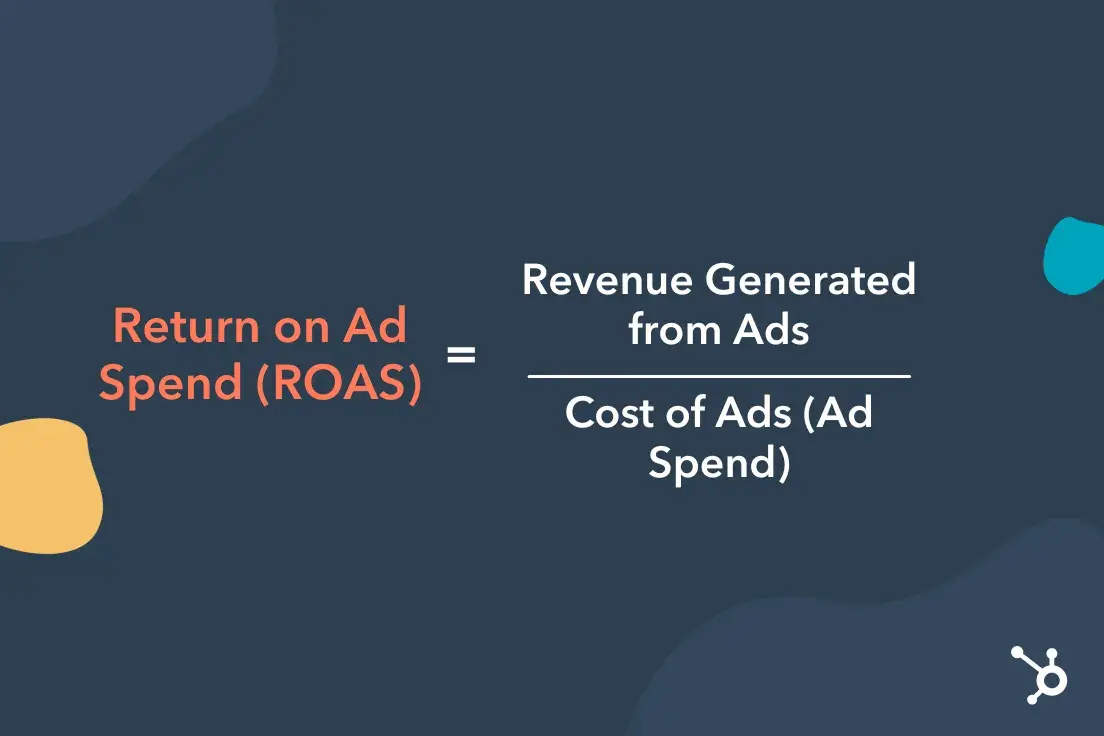
HubSpot will also tell you this for your LinkedIn, Google, and Facebook Ads as “ROI.”
How to Report Your B2B Marketing KPIs and Metrics
Data without meaning is useless.
That’s why once you’ve identified and can successfully track all your metrics, you need a plan for analyzing and reporting findings to your team and other stakeholders.
As Allie Konchar, Partner & Head of Client Operations of digital growth agency Omniscient and former HubSpotter, explains, “Marketing reports uncover meaningful, actionable data that help you draw important conclusions and meet organization-wide goals.”
Marketing reports can be critical to informing future marketing decisions and strategies, so it’s important to learn how to create them successfully. This article by Konchar further details how to build and analyze marketing reports.
We’ve also created a collection of monthly marketing report templates to get you started. These will help you:
- Track the monthly growth of your visits, leads, and customers.
- Measure your website’s visit-to-lead conversion rate.
- Accurately track which channels are performing best.
- Plug your metrics into a PowerPoint or Google Slides deck to present to your boss.
Get yours here for free.
Tracking your way to success with KPIs
Ok, I know — that was a lot. And the truth is, there are likely even more B2B marketing KPIs your team will need to track to truly have a firm grasp on its performance.
But once you’ve got the right tools and templates in place to help you make sense of everything, it’s much easier to scale and adjust your efforts. Use this list and the tips shared to get started and start tracking your way to marketing success.
Credit: Source link











